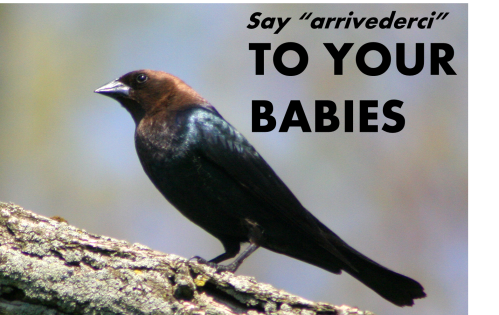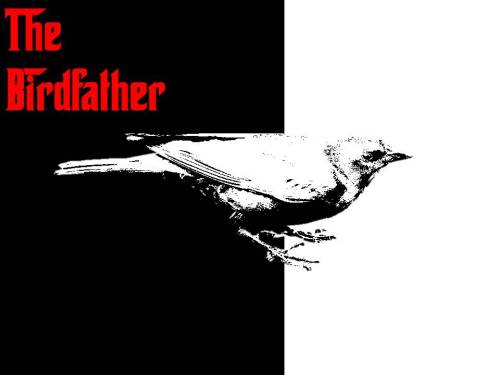If I were to imprint on you one main point stringing together every article I’ve ever written for Badass Biology, I hope it would be this: nature has produced no shortage of jerks. I say “jerk” like it’s a bad thing, but take the time to think about the word and you’ll realize “jerk” becomes a bit endearing when we’re talking about nature.
First, let’s review what it means to be called a “jerk” species. First, a jerk has to be abundant enough to merit some sort of attention or recognition, but not more abundant than non-jerks, otherwise the jerk strategy would be much less effective. This population size balance is very delicate, but jerks seem to manage it well. Second, being a jerk means going against some established natural norm. Usually, jerks exploit some mutually beneficial arrangement between individuals, leaving another party to carry their weight for them. It’s a pretty clever strategy if I say so myself. Third, present a jerk with an opportunity and it’s likely to get snagged. Another admirable trait in favor of biological jerks
Back to the point, Planet Earth has lots of jerks. Consider the bluestreak cleaner wrasse. On Southeast Asian reefs, cleaner wrasse set up cleaning stations where they pick off the tiny parasites that live in the skin of larger fish. This arrangement seems to work for everyone (except the parasites, unfortunately); the wrasse get dinner while the larger fish get a good skin treatment. Some jerk wrasses, let’s call them “wrasseholes”, like to instead bite big chunks out of the mucus membranes on these fish instead, turning this mutualistic interaction into a parasitic one.
To be honest, it’s not that I find this interaction all that neat. The main reason I bring this up is to mention that it DID spawn an article in Discover Magazine with a really clever name: Cheater Cheater Mucus Eater.
Sure, jerks are great and all. My favorite? This little guy:
Adorable, right? What about now?
Make no mistake. This stone cold killa is ruthless, even enough so that I’d put the word “killa” in an article that I’m reasonably sure a future employer will read.
So what about this little bird makes it so much of a wrassehole? To start, an introduction. This is the brown-headed cowbird, a member of the family Icteridae, which consequently means nothing at all to me but sounds pretty badass all the same. What distinguishes cowbirds is that they are notorious brood parasites. They find nests belonging to other aviary families, mostly songbirds but varying from hummingbirds to birds of prey, lay their eggs next to theirs, and let those other poor bird parents feed, raise, protect, bathe, clothe, and attend PTA meetings of cowbird babies. As of 1999, approximately 140 species of birds have been documented raising cowbird young.
Here’s what’s odd about this. I’m sure you’ve guessed that cowbirds are able to get away with this sneaky business because their eggs and young look an awful lot like the birds they’re parasitizing. They don’t. More often than not, cowbird eggs are either much larger than the eggs of their host AND a different color and pattern. Moreover, cowbird chicks are gigantic when they hatch, making little songbird chicks look tiny by comparison.

One of these eggs is a parasitic cowbird’s. Can you guess which one? Did you guess the one on the bottom left? You did!? Very good!
You may be asking yourself, “why do these other birds raise babies that aren’t their own?” Right now, I’m asking myself, “have I smelled like this all day?”, but that’s really of no consequence to anyone (except my wife, I guess).
Oddly, one theory explaining why the hosts hadn’t murdered these little guys is, and I’m serious, that the host birds don’t have the cognitive ability to recognize that these chicks are different from the others. It seems odd to me that the same birds can relocate their nests among thousands of other similar-looking forest objects with near-identical colors and patterns would not be able to recognize that one of their babies is a freakish monster.
Meanwhile, I only learned today that I live 5 minutes from a major interstate highway, but I’m confident that there’s no gigantic monster baby living in my house. One of our cats is pretty large, sure, but I’m not convinced I’m her father or anything.
No, the real reason host don’t viciously murder cowbird young is pretty sinister. In 2007, two researchers from the University of Florida set up a field experiment where they manipulated cowbird presence in predator-free nests of host birds. In “ejector” nests, the researchers removed cowbird eggs from host nests, mimicking a host that rejected a cowbird egg, whereas “acceptor” nests saw through the raising of a strange foreign cowbird hatchling. In all, 56% of ejector nests saw some the destruction of host bird eggs, but only 6% of acceptor nests were ruined. What happened?
Cowbirds happened. Females, actually. These jerks monitored the nests of their hosts, checking in on the progress of their young from time to time. If cowbirds found that their babies weren’t receiving the star treatment (or weren’t in the nest at all), the cowbirds would lay ruin to the eggs of the host bird. Essentially, these birds were exhibiting mafia behavior, laying down some pretty severe consequences if the host rejects the parasite.
What’s equally sinister is the explanation for destruction in the 6% of acceptor nests. Why kill the young of a nest that’s satisfactorily caring for your own young? Simple: murder creates room in the nest for more cowbirds.
In summation, I quite admire cowbirds. In a group of organisms whose ability to distinguish which egg is their own is questionable, these ladies are clever. It’s pretty rare to see such a sophisticated racket exist in animals with brains the size of beans. Think about the cognitive power cowbirds need to keep track of which nests are parasitized, then decide on whether to murder or not murder depending on what they see. I gotta say I’m impressed.
So, like a Don collecting tribute from his corner of Little Italy, cowbirds command respect. They’re clever, manipulative, aggressive, greedy, and all of it is so sinisterly bundled in a package that I’d rather enjoy petting. Plus, it’s nice to know that some species out there gives others an offer they can’t refuse.



